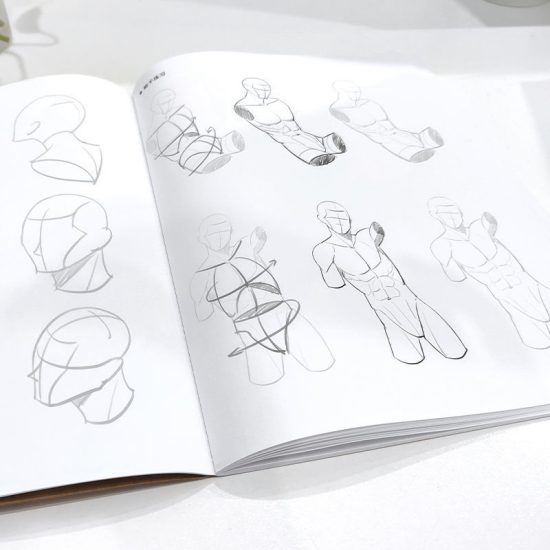The artistic process from sketchbook to finished piece involves several stages of development and refinement. Here is an overview of the typical steps involved:
- Inspiration and Idea Generation: The artistic process often begins with inspiration, whether it’s sparked by a concept, a reference image, a personal experience, or any other source. In your sketchbook, you can explore different ideas, create thumbnail sketches, and jot down notes to develop and refine your concepts.
- Sketching and Preliminary Studies: Once you have a concept or idea, you can start sketching and creating preliminary studies in your sketchbook. These sketches serve as a foundation for the final artwork. Use this stage to experiment with compositions, explore different visual elements, and refine the overall design.
- Refinement and Iteration: Based on your preliminary studies, you can further refine and iterate on your ideas. Make adjustments to the composition, experiment with different perspectives, and fine-tune details. This stage allows you to explore different possibilities and find the best approach for your final piece.
- Value Studies and Color Exploration: In your sketchbook, you can also experiment with value studies and color schemes. Explore different lighting conditions, shading techniques, and color combinations to enhance the mood and visual impact of your artwork. This stage helps you plan the overall tonal values and color palette for the final piece.
- Transfer to Final Surface: Once you are satisfied with your sketches and studies, you can transfer the design to the final surface or canvas. This could involve using tracing paper, a lightbox, or a gridding method to accurately transfer the proportions and details from your sketchbook to the larger surface.
- Execution and Rendering: With the design transferred, you can begin the process of executing the final artwork. Use the appropriate art materials and techniques based on your chosen medium. Pay attention to details, values, textures, and color application to bring your vision to life. This stage requires focus, skill, and attention to detail.
- Refining and Final Touches: As you progress with the execution of the artwork, continuously assess and refine the piece. Make adjustments to the composition, values, and colors as needed. Add additional details and refine the textures and surfaces to enhance the overall quality and impact of the artwork.
- Evaluation and Critique: Take a step back and evaluate the progress of your artwork. Consider seeking feedback from trusted sources, such as fellow artists or mentors, to gain fresh perspectives and insights. This evaluation and critique stage helps you identify areas for improvement and make necessary adjustments before finalizing the piece.
- Finishing Touches and Presentation: Once you are satisfied with the artwork, add any final touches and prepare it for presentation. This could involve signing the artwork, applying protective varnish or fixative (depending on the medium), and selecting the appropriate framing or display options.
The journey from sketchbook to finished piece is a creative and iterative process. Each stage offers opportunities for exploration, experimentation, and refinement. Embrace the artistic process and allow yourself to make adjustments and discoveries along the way. Remember, the sketchbook serves as a valuable tool for developing and honing your ideas before bringing them to their final form.


